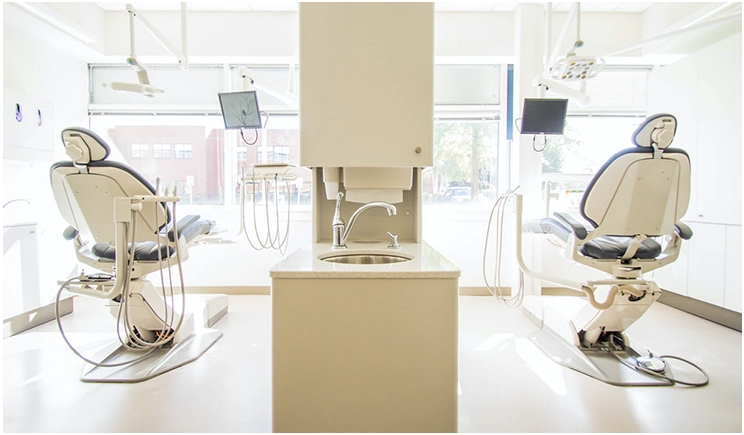
McDonald’s is famous for inventing and continuously re-inventing the fast-food industry. What most people don’t understand, however, is that most of its profits aren’t from the burger-flipping business but from the commercial real estate business. Although known for drilling, filling, and billing, dentists can learn a thing or two from this restaurant chain.
Dentists are high-income earners. But while they have tremendous opportunity to build wealth in several ways, they often blow it by making emotional and impulsive choices such as ski trips, fancy cars, and vacation homes. Then they’re left with no money for large opportunities when they present themselves. One of those opportunities is owning your own building.
Recent Real Estate Trends
One of the largest parts of any dental practice’s expenses is rent, which can range from $2,000 to $30,000 a month depending on its size, location, and pace. This is money you potentially could put into your own building or, better yet, your retirement.
However, owning and developing commercial real estate is easier said than done. Zoning issues, limited space, bureaucratic delays, large debt loads, and the risk of losing patients when moving are all considerations one must make before making such a decision.
Over the last 15 years, commercial real estate has reached dizzying highs. Buildings worth $1 million on paper were selling at over $3 million right before the pandemic took hold. In this seller’s market, landlords had a firm grip on their tenants and could do pretty much whatever they pleased, so long as it didn’t exceed the boundaries of the lease too far.
For retailers, moving would be simply a matter of packing up their equipment and products and relocating to any open space willing to rent. But for dentists, the case has always been more difficult, with plumbing, mercury waste disposal, lead-insulated walls, proper disposal services, and the like halting any decision to relocate.
For years, dentist tenants who were unhappy and wanted to move couldn’t because of all these limitations, and landlords knew it. Landlords could walk in and demand anything at will, and they knew they could get away with it because of the difficulty involved in moving.
With the COVID-19 pandemic, a particular opportunity has presented itself to dentists. Overnight, a landlord’s dream and a seller’s market had turned itself upside down. After two weeks of the shutdown in March, only 25% of mall tenants were able to pay their rent, commercial retail property dropped 11%, and banks began to freeze lending for small and medium-sized commercial real estate deals.
Also, commercial retail already was ailing before COVID-19 thanks to online shopping, in particular from the behemoth, Amazon. Major anchor tenants like Sears and JC Penny were already in trouble. COVID-19 helped expedite their demise and the fall of the shopping mall concept in general, leaving more and more open commercial retail space and decreasing square-footage values.
Along with the drop in commercial retail value, businesses began to embrace telecommuniting, reconsidering their big office spaces and having every staff member present at the same time. Suddenly, people didn’t have to live close to work anymore, as more and more could be done remotely. This will surely be a long-term trend, allowing big businesses to choose smaller spaces when leases are up in the near future.
Become a Mogul
Dentists now are in a prime position to ask for new lease terms with lower rates, leaving their lease early, buying out their building, or developing their own land and building in a better location for a better value due to the decrease in demand and price for commercial retail space, the decrease in buyers because of the lack of confidence in the real estate industry, the decrease in accessibility to loans from the banks for investors in the industry, and fewer tenants to fill the space. As Warren Buffet said, buy when there is blood in the water.
During the past 15 years, lease renegotiations could be a nightmare for tenants. But now, tenants hold the upper hand. Suddenly, arbitration for resolving the price of commercial square footage rates would undoubtedly benefit tenants. Buying buildings from money-stricken landlords could become common. Tenants could even negotiate shorter leases and begin working on building new developments. While banks are cautious to give out loans to individuals purchasing commercial real estate for investment purposes, they very much favor and will still lend to dentists as tenants in their own building.
Many people are familiar with the stock market and the stories of how quickly riches can be gained by playing it. Less often shared are the stories of loss. Commercial real estate, though not nearly as sexy or as discussed as the stock market, can be just as lucrative, if not more, especially if you’re a tenant in the building.
By owning your own building, you’re putting your rent money into an asset that you control as the inevitable demand for property drives up its property value ever more. But you also could have total control over your clinic, including signage, types of other tenants in the building, designated parking, and other choices—not to mention the tax shelters that come with owning your own building.
When the stock market crashes, housing and commercial real estate are sure to follow, albeit many months later. The COVID-19 crash occurred in March, and one can predict a more significant crash in housing and commercial properties in late autumn. Dentists should take heed and prepare themselves for the purchase of a lifetime.
Dr. Zariczniak is a dentist in Hamilton, Ontario. He holds a DDS from the Schulich School of Medicine and Dentistry at the University of Western Ontario. He also is a member of the American Academy of Cosmetic Dentistry and the Ontario Dental Implant Network. He can be reached at info@stonehilldental.ca.
Related Articles
Address Three Post-Pandemic Areas for a Successful Business Turnaround
Protect Your Revenue Cycle by Building an Insurance Claim Process
New York Dentists Finally Return to Work as Challenges Remain











